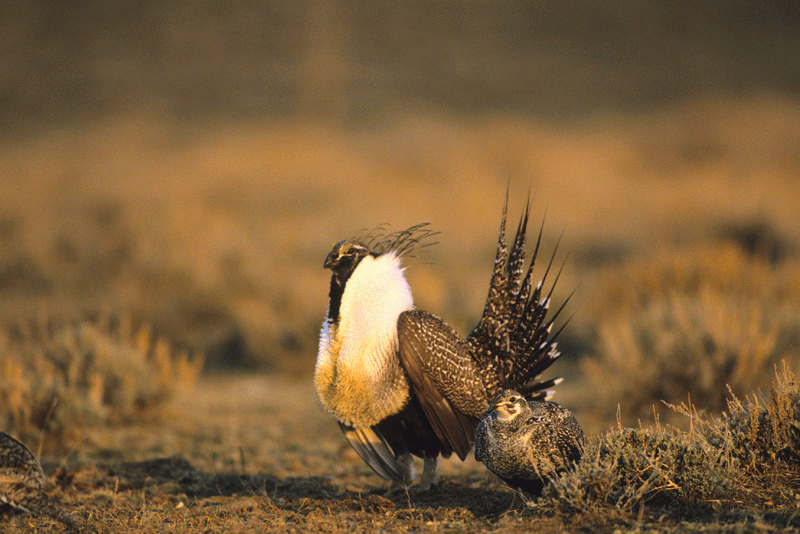Advertisement
Canada’s biggest native grouse can weigh up to three kilograms and stand two-thirds of a metre high. Ironically, considering their size, sage grouse also live in the most open habitats. At one time if you wanted to see one, you just headed to southern Saskatchewan or Alberta and looked for short grass and sagebrush. Now, though, it may be too late.
Up until the 1990s, both provinces had enough of the dramatic grouse that hunting them was still allowed. But by last year, there were only 13 male sage grouse in all of Alberta and just 42 in Saskatchewan—a decline of almost 98 per cent since 1968 (because male sage grouse gather each spring on traditional mating grounds, or leks, it’s easier to count males than females). This year, scientists predict, the birds may vanish from Alberta altogether. In 10 years, they’ll likely be gone from Saskatchewan, too.
Advertisement
So, where have they all gone, and why? And perhaps more importantly, can we get them back? Part of the blame for the loss stems from the fact provincial biologists have no authority to protect habitat. So observes Bill Wishart, a retired Alberta government biologist. “It could have been avoided if we’d had some control over the land,” he says. “Not having any say on land use has been a real problem.”
Sage grouse need native grassland with good sagebrush cover, both for winter food and shelter from predators. But over the past quarter century, conversion of native prairie to cropland, reservoirs and other uses has reduced Alberta’s sage grouse habitat from 49,000 square kilometres to barely 4,000.
The oil and gas industry, meanwhile, has been busy slicing up what remains. Researchers have found that sage grouse abandon leks within six kilometres of well-drilling activity. In winter, the birds are less sensitive, but they’ll still avoid sagebrush habitat within 1.9 kilometres of industrial activity. Even when energy companies reclaim land, sagebrush doesn’t come back. And with more and more gaps in the cover, and more fences and wellheads for hawks to use as perches, young sage grouse simply don’t survive.
Advertisement
While efforts are afoot to boost sage grouse populations (see “Grouse gains”), the only real hope for the species is to save what remains of the once-vast prairies—and restore some of what has already been lost.
In 2009, conservationists took the federal government to court to apply the Species at Risk Act, or SARA, which requires Ottawa to designate critical habitat for endangered species. When the court ordered the government to obey its own laws, the feds merely identified small patches of critical habitat that would inconvenience the oil and gas industry as little as possible.
Then last November, several conservation groups filed a petition with the federal environment minister, asking him to use his powers under SARA to halt oil and gas activity in the last places sage grouse survive in Canada. It’s not an unreasonable request: the industry already has access to vast areas. As well, gas reserves can be tapped using horizontal drilling and other technologies without impacting habitat.
“We have strong science telling us how and where oil and gas development must be regulated if sage grouse are to survive in Canada,” says Mark Boyce, a sage grouse expert with the University of Alberta. “But the governments of Alberta and Saskatchewan and the oil and gas industry are refusing to act on it. Unless they change course immediately, sage grouse will become the first species extirpated because of the oil and gas industry.”
What are the chances of avoiding this dire outcome? Slim, without citizen pressure. Surely the sage grouse and its prairie habitat are worth it.

